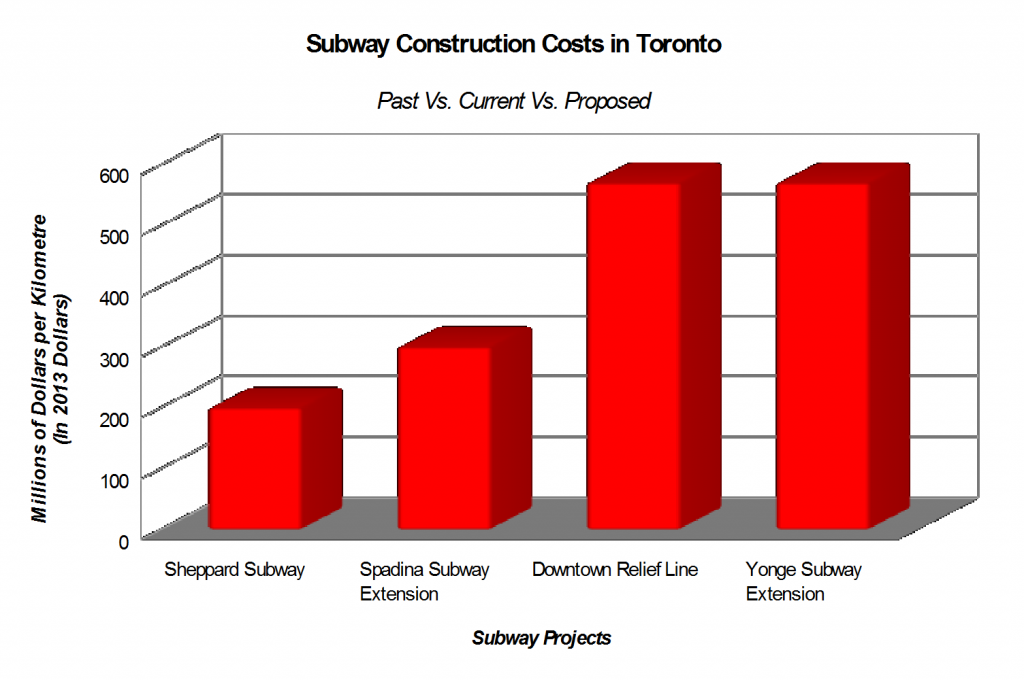Politcal Penis Envy Drives Subway Costs
This is rather old news and one questions why the media have not picked up on this earlier.
Subways cost a lot of money to build, yet they provide no better service than modern light rail, unless traffic flows on the transit route surpass around 20,000 pphpd.
Vancouver does not have one route that has traffic flows surpassing this number and it well to remember that the three light metro lines have many bus routes transferring their customers onto the light metro, instead of providing a direct service to downtown Vancouver.
If the cost of elevated and subway construction was, instead, spent on at-grade LRT, we could build many North/South – East West lines giving a far better and more comprehensive transit service, providing a much more user-friendly, seamless or no transfer journey, which has proven to attract ridership.
Until taxpayer’s wake up and understand that they are being taken for a very expensive ride to provide “politcal penis envy” for regional politicians, a quality transit service for the metro Vancouver region will prove to be extremely elusive!
2010
Canada’s soaring subway construction costs need to get back on track
As transit planning in Toronto is wracked by a political tug-of-war, one of the most important issues has been almost completely ignored: New York has the highest construction costs in the world, but Toronto is a strong competitor for second place. The city is spending a vast sum on a very ambitious transit-expansion plan, but is getting far less track for the buck than most other places around the world. It’s a national problem, too: Other Canadian cities’ transit construction costs are not far behind.
In the past year, price estimates for Toronto’s Relief Line and Scarborough subway extensions have ballooned. The Relief Line’s projected costs rose to $7.22-billion, or about $1-billion for each kilometre. The Scarborough subway one-stop extension is now projected to cost $3.48-billion for a 6.2-kilometre line. While the Scarborough extension may seem like a bargain by the Relief Line’s standards, subway stations are usually the costliest part (about 75 per cent of the itemized costs in New York), and thus a single-stop line which should be cheap, isn’t.
In contrast, the median urban subway around the world costs less than $300-million for each kilometre. This includes complex projects such as Grand Paris Express, an automated network bored under dense inner suburbs including the office tower cluster at La Défense business district.
And Paris is just the median: In cheaper cities such as Seoul, Stockholm and Madrid, urban subways under historic city centres or waterways cost $100-million to $150-million a kilometre.
Even the new Ontario Line plan – a transit line in Toronto proposed by the provincial government and meant to cost less than the Relief Line proposal – is still expected to cost $735-million per kilometre, and much of it isn’t even underground. Curiously, Canadian costs were not always especially high by world standards. Toronto’s Sheppard subway was completed in 2002 for about $166-million a kilometre.





